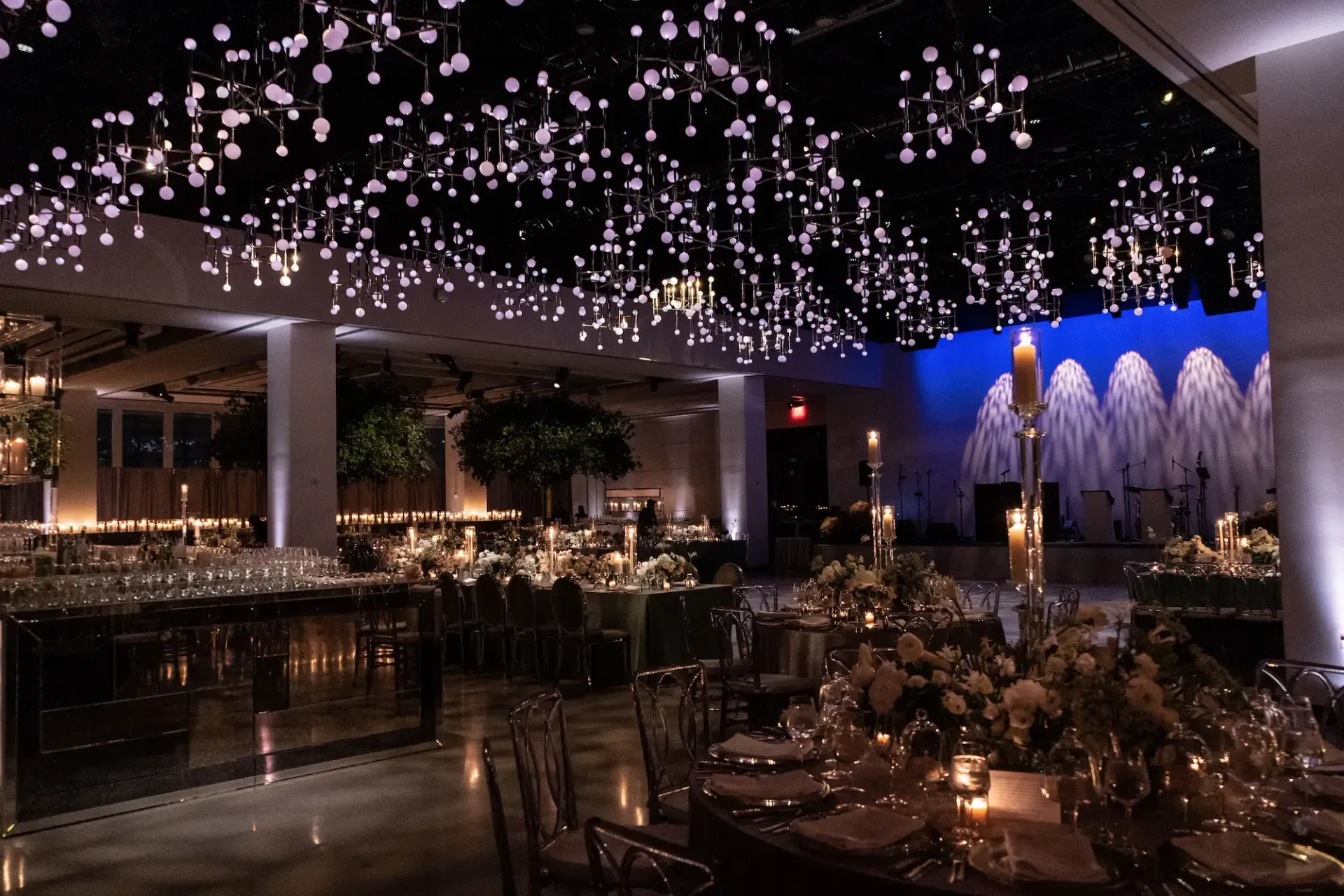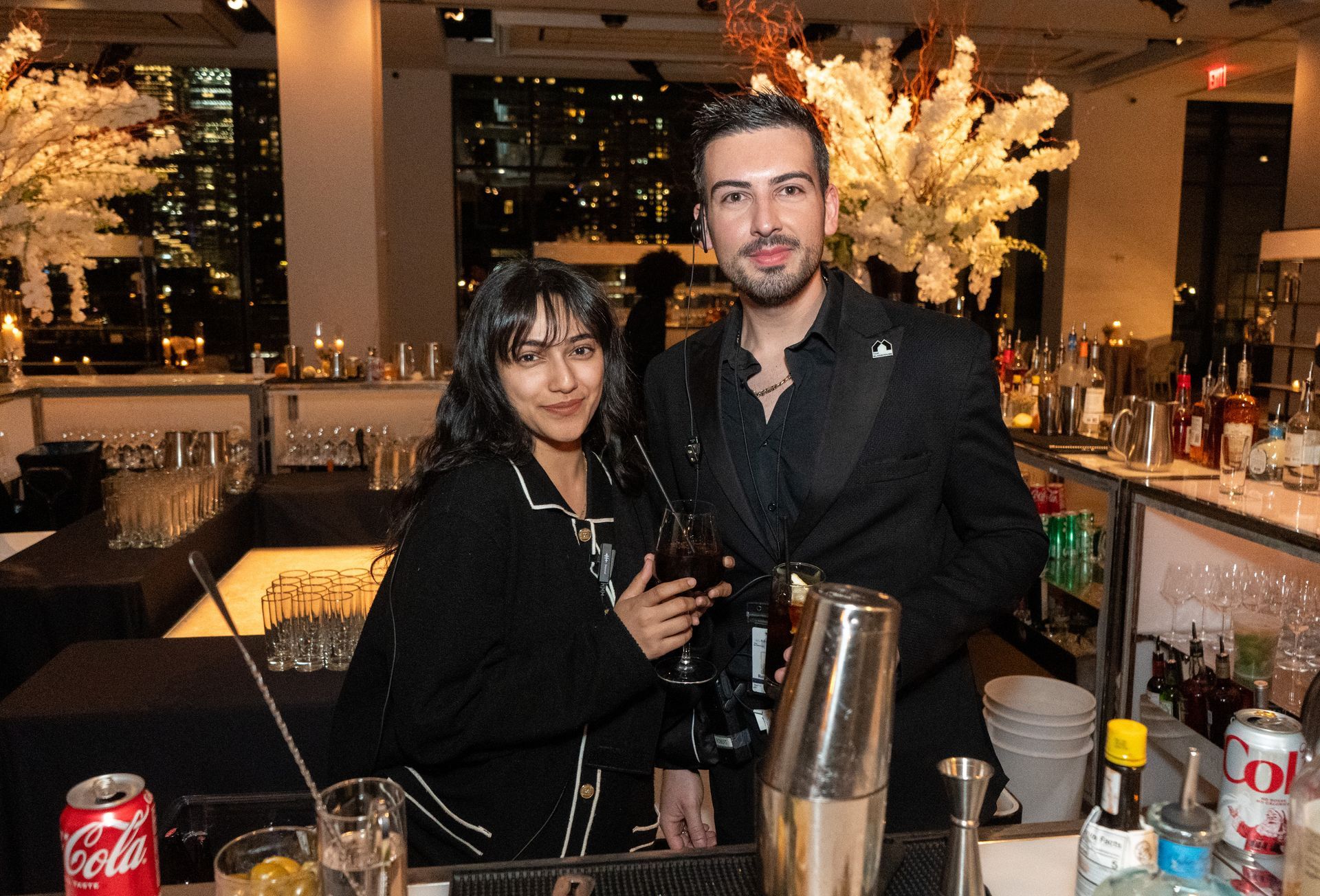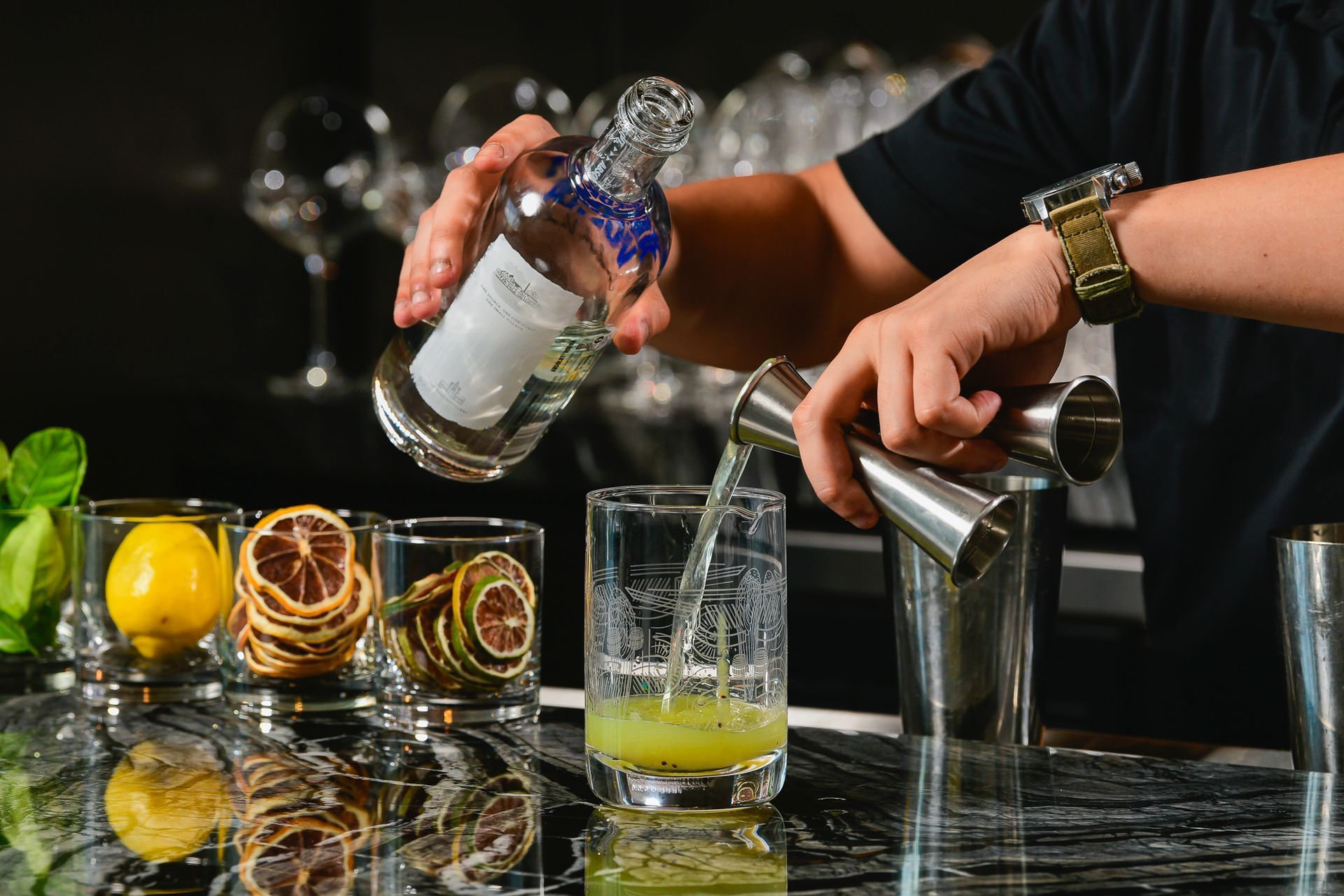Virtual, Hybrid, and Beyond: What’s Next for Events
Out of necessity, 2020 was the year of the virtual event.
But it wasn’t necessarily all bad: With the virtual format came some unexpected positives, like the potential for unlimited reach and an immediate intimacy never before attainable at large, in-person events. It’s an attractive value proposition, especially for corporate and non-profit events. (Plus you get to see inside the big boss’s home, which is always fun). Here are some trends from 2020 that we think will continue into the future. As event safety parameters evolve, the Glasshouses team is there to support every step of the event planning and execution process… And when we’re ready to be back fully in-person, The Glasshouse will be there to celebrate with a capacity 1,850-strong. Until then, for the most part, we’ll be working creatively alongside you to ensure you achieve your intended event vision.
1. Virtual is still required…
Before we’re all comfortable holding large in-person events, the virtual element will be vital, and the least-complicated path for gatherings. But why not have fun with it? Let creativity take the helm, and use the opportunity to create compelling content to share with a broader audience. For their New Works Festival, the New York City Ballet created a short video celebrating the city , featuring dancers Christopher Grant, Sara Mearns, Georgina Pazcoguin, and Taylor Stanley in vignettes around the city.

The Louis Vuitton Men’s Fall/Winter 2021 video presentation created a dreamy narrative with winter settings and ice rinks. The show also featured a traditional runway element with guest appearances by Yasiin Bey, Saul Williams and Kai Isaiah Jamal.
Live on the edge with live events versus pre-recorded events, or plan things that previously would have never been possible. This year’s Tibet House Benefit concert celebrated the year of the metal ox with a video segment from the Dalai Lama himself, transporting the esteemed spiritual leader straight into concertgoers’ homes.
2. But hybrid will become home.
2020 was the year of fully-virtual galas to great success, but non-profits thrive on the personal touch. This year will move toward the hybrid event: part live experience, part virtual attendance, which may eventually become the norm. It’s a win-win for those involved: Not only does the hybrid event give attendees the choice of how they want to attend, organizations can also broaden their reach with countless more invitees, including those who want to support the cause and participate but either have scheduling conflicts being there in-person, or aren’t in the position to purchase a table.
3. Keep the people, expand the number of events.

Say you want to do everything in-person, meaning the number of attendees would be drastically reduced, at least for now. Like museums with reserved ticketing and reduced capacity, multi-day events can be held with a smaller daily guest count. Think exhibitions, fairs, or fashion presentations: the same reach can be achieved with a multi-day event. Venues with outdoor space will lend themselves nicely to this and hint hint, The Glasshouse and Glasshouse Chelsea have outdoor terraces, with memorable Hudson River views.
4. Get creative with giving.
Meaningful impact can still be made with virtual events, and there are even new opportunities to thank donors in the pre-event virtual waiting rooms and post-event credits. Physical tables may be out but virtual seats can fill the void, like with the Humane Society’s 3D gala hosted by SNL’ s Cecily Strong last October. Guests could virtually roam through glamping areas and backyard barns and were assigned dining spaces with name cards. (Added bonus: if waistlines have not cooperated in the past year, avatars can be as skinny as you want.) The Humane Society also staged an auction where guests could bid on items like the opportunity to wow Michael Bloomberg with an idea over Zoom, and a bucket-list trip to the Canadian region where harp seals give birth on floating ice.
5. Emphasize interactivity, especially when virtual.
Engaging remote guests in a virtual or hybrid event is its own challenge. You can go the way of splurging on talent — of course everyone will want to interact with Lady Gaga! – or take advantage of the fact that there’s no fixed location, as with the Jazz at Lincoln Center gala , which included performances from Japan to Cuba. (We especially enjoyed prestigious French accordionist Richard Galliano zooming in from the South of France). Engage attendees with segments like cooking classes: the National Italian American Foundation honored Dr. Anthony Fauci and in a pre-show segment taught 4,000 virtual guests to make Fauci Fettuccine . And get them fired up with contests: the 2020 EDGE awards held a Best (Virtual) Dressed contest where guests were encouraged to be “dressed for success, virtually!” Perhaps after the contest the dolled-up guests can take their outfits to a virtual after party, hosted by a DJ.
6. Create intimacy through entertainment.

Forced virtual events came with an unexpected benefit. Seeing inside a performer’s home—like with Rufus Wainwright’s very literary piano corner during the Equality California benefit last September–humanized the talent and set the mood to easily reach a level of intimacy previously not accessible, yet very beneficial to the goals of non-profits. Every attendee was a front row VIP, feeling a closer connection to the cause. Intimacy was also facilitated by honoring first responders as guests—done at February’s Golden Globes— infusing a sense of reflection. It’s a feeling that will continue to be harnessed in the future, even if the event is live. Look for setups to be more intimate —just a musician and his instrument—and décor subdued.
7. Build an at-home experience that rivals being there in person.

As we’ve seen with weddings , caterers adjusted their strategies to deliver exciting culinary experiences within new parameters. And in the corporate and non-profit world they’re doing the same: the City Harvest BID: The Show Must Go On featured meals by Michelin-starred Cote Korean Steakhouse “delivered to your doorstep.” Beyond food, planners are getting creative with recreating the gala experience at home. One of Glasshouses’ preferred entertainment vendors, On the Move , custom curated an exclusive microsite for the BID fundraiser with a variety of live eye-catching performances. The experience featured an hour-long video piece for guests to watch later, embellished with virtual celebrity appearances and endorsements. The show, appropriately, featured a musical performance from The Greatest Showman and broke fundraising records, feeding 1.6 million families in New York City alone. To enhance an at-home experience, we recommend topping off the experience with a piece of décor and keeping attendees vibing post-event with a curated playlist. Tiny disco balls for everyone.
8. Make gift bags go virtual.
One thing we’ve learned while being at home with all our stuff is, we really don’t need any more stuff. But everyone still loves a swag bag. A digital gift bag is a sustainable alternative to shipping out goodies, and works just as well if not better for engagement and branding. Feature items like subscriptions to digital publications, discount codes, gift cards or a donation to charity, and experiences like cooking classes, with the added bonus that if someone downloads a link or uses a code, the engagement results are easily measurable. JDC Events in Washington DC recently launched a separate digital swag-bag service and suggests giving guests a Starbucks e-gift card when they sign in as part of their welcome, and following-up by inviting them to join you for future cup of coffee.
Hero image is from NYCB’s New Works Festival; image by Erin Baiano
The post Virtual, Hybrid, and Beyond: What’s Next for Events appeared first on Glasshouses.
More stories from
The Glasshouse




